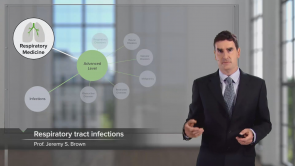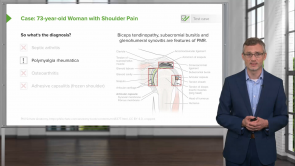Abdominal CT Techniques: Hounsfield Units and Intravenous Contrast
Über den Vortrag
Der Vortrag „Abdominal CT Techniques: Hounsfield Units and Intravenous Contrast“ von Hetal Verma, MD ist Bestandteil des Kurses „Abdominal Radiology“. Der Vortrag ist dabei in folgende Kapitel unterteilt:
- Radiation: Hounsfield Units
- Intravenous Contrast
Quiz zum Vortrag
What is TRUE regarding CT imaging?
- The radiation dose varies based on the type of the machine and the type of scan.
- A head CT scan has more radiation than an abdominal CT scan.
- Air has higher Hounsfield units than water.
- Fat has higher Hounsfield units than soft tissue.
- Radiation dose is the same with all machines and scans.
Which of the following is a feature of an intravenous contrast agent?
- IV contrast opacifies structures based on the amount of blood flow.
- IV contrast is ionic with high osmolarity.
- IV contrast should be avoided in patients with a GFR of <60 ml/min.
- IV contrast is metabolized by the liver and excreted in the stool.
- IV contrast is not a drug and thus does not cause allergic reactions.
Which contrast agent is used if there is a suspicion of bowel perforation?
- Gastrografin
- Dilute barium sulfate
- Gadolinium medium
- Barium iodide
- Saline water
Diese Kurse könnten Sie interessieren
Kundenrezensionen
5,0 von 5 Sternen
| 5 Sterne |
|
5 |
| 4 Sterne |
|
0 |
| 3 Sterne |
|
0 |
| 2 Sterne |
|
0 |
| 1 Stern |
|
0 |







